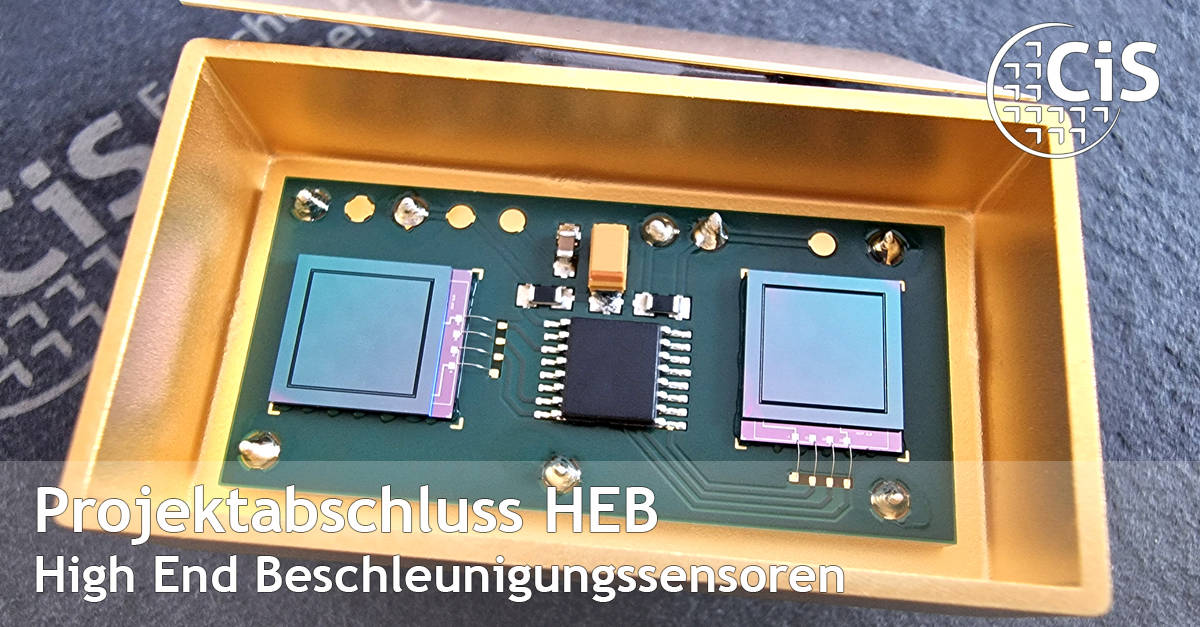The HEB project involved the development and production of very high-resolution capacitive MEMS acceleration sensors for inclination and leveling measurements as well as condition monitoring. Concepts from the high-end application area were transferred to applications that were previously not accessible for these concepts by using chip-level process steps.
Uncontrolled tilt sensors with a resolution of typically 0.001° were implemented. The tilt angle α of the sensor results in an effective gravitational acceleration g’, which causes a deflection of the spring-mass system Δx, which is read out by a lateral differential capacitor with ΔC via a signal processing circuit.
The individual HEB sensors were first joined at chip level. The opposing chips are pressed together using a fine placer so that the metal structures of the spring-mass or carrier chips (Si or glass) are connected using Au-Stud bumps and the distances are set to approx. 5.6 µm. In the further course of the project, demonstrator module structures were realized. These consist of a hermetizable metal housing with glass feedthroughs, into which a circuit board with two orthogonally arranged sensors and a two-channel circuit is soldered.
The deflection of the spring-mass systems was initially examined optically using a camera as a function of the tilt angle. Capacitive tests of the sensor modules were then carried out, initially on a rotary axis to cover a range of +-180°, and later on a precision tilting table in the angle range of +-10°. The function of the elements corresponds to the simulated results, with the exception of a few elements with particles. The measurements provide the following typical properties, which meet or in some cases exceed expectations:
Manufacturers of sensor solutions in the field of inclination or leveling sensors and condition monitoring are typical users
 The research and development work described was funded by the Federal Ministry of Economic Affairs and Climate Action (BMWK) as part of the “High-end acceleration sensors” (HEB) research project.
The research and development work described was funded by the Federal Ministry of Economic Affairs and Climate Action (BMWK) as part of the “High-end acceleration sensors” (HEB) research project.
Funding Code: 49VF200064




